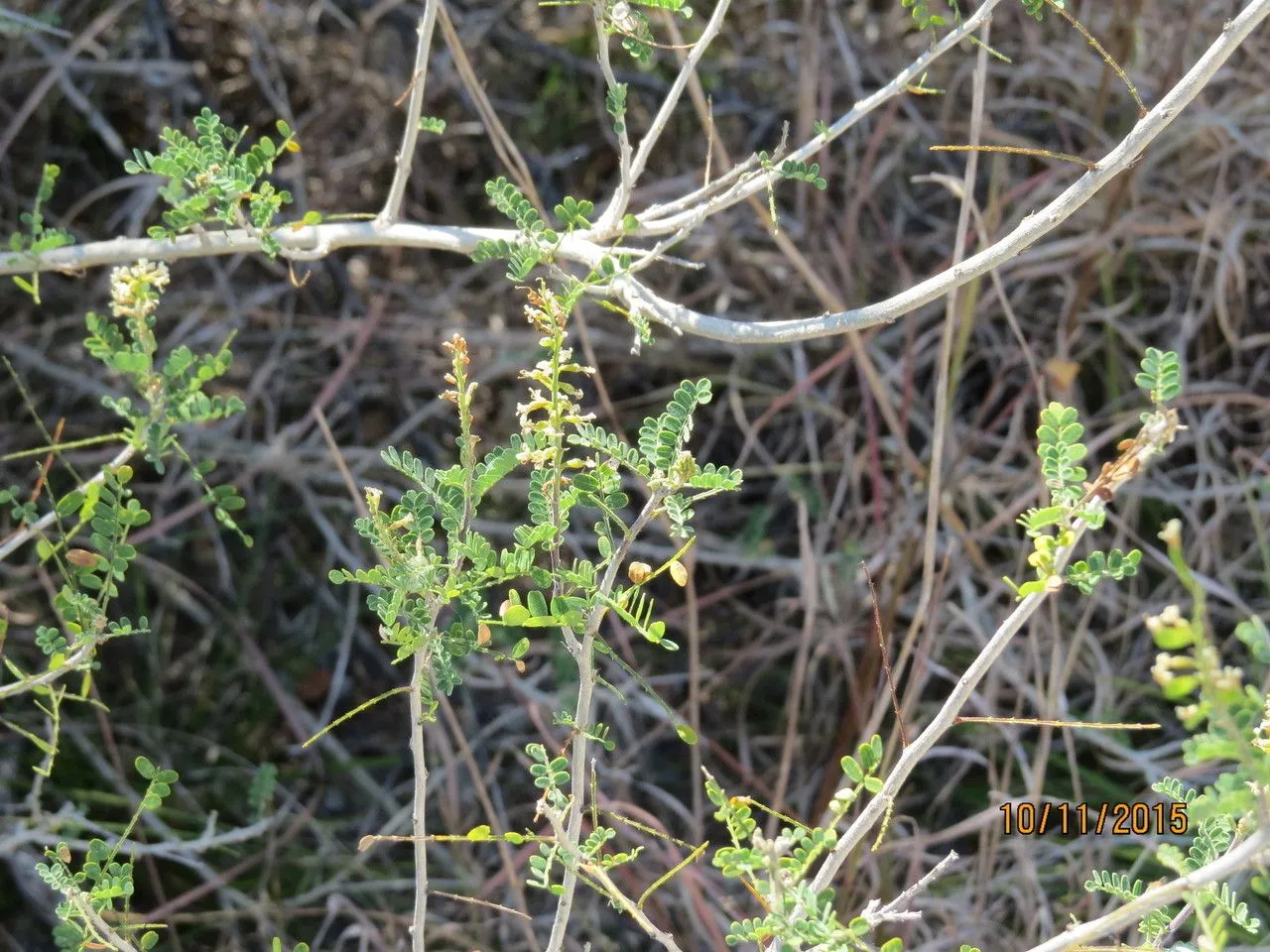
Author: Scheele
Bibliography: Linnaea 21: 462 (1848)
Year: 1848
Status: accepted
Rank: species
Genus: Eysenhardtia
Vegetable: False
Observations: S. Texas to E. Mexico
Texas kidneywood, scientifically known as Eysenhardtia texana, is a remarkable plant species recognized for its unique characteristics and ecological significance. This bushy perennial shrub is a member of the Fabaceae family, commonly known as the legume or pea family, which encompasses a diverse range of plants critical to various ecosystems due to their nitrogen-fixing abilities.
Native to South Texas and extending into Eastern Mexico, Texas kidneywood thrives in these regions’ warm climates and well-drained soils. Its distribution highlights its adaptability and resilience in somewhat arid environments. The plant typically grows in open scrublands and rocky slopes, often becoming a dominant component of the local flora.
Eysenhardtia texana is notable for producing small, fragrant white flowers that attract a variety of pollinators, including bees and butterflies. This blooming season usually occurs during the warmer months, contributing to the plant’s role in supporting biodiversity by providing essential resources for pollinators and other wildlife.
The foliage of Texas kidneywood is equally interesting. The leaves are compound, consisting of numerous small leaflets that are finely textured, adding to the shrub’s delicate appearance. Despite this, the leaves are tough and well-suited to the harsh conditions of the shrub’s native habitat.
In addition to its ecological role, Texas kidneywood has been valued for various traditional uses. The plant is known for its wood, which, although not commercially significant, has been utilized locally for its durability and density. Moreover, certain cultural practices have also recognized the potential medicinal properties of this plant, particularly relating to kidney health, which is reflected in its common name.
Documented in “Linnaea” in 1848 by Scheele, Texas kidneywood has since been a subject of botanical study due to its ecological importance and distinctive characteristics. Its continued presence across its native range underscores the need for conservation efforts to protect such valuable species and their habitats.
Understanding and appreciating plants like Eysenhardtia texana enriches our knowledge of biodiversity and ecological interconnections, highlighting the intricate relationships that sustain our natural world.
Eng: texas kidneywood
Spa: vara dulce
En: Texas kidneywood
Es: Vara dulce
© copyright of the Board of Trustees of the Royal Botanic Gardens, Kew.
© copyright of the Board of Trustees of the Royal Botanic Gardens, Kew.
© copyright of the Board of Trustees of the Royal Botanic Gardens, Kew.
Taken Feb 5, 2015 by EOL − Raúl Ernestoo (cc-by-sa)
Taken Sep 16, 2021 by L. Bush (cc-by-sa)
Taken Jun 26, 2021 by Barb T (cc-by-sa)
Taken Sep 14, 2022 by Micheal Tuchband (cc-by-sa)
Taken Sep 2, 2022 by Meredith Norwood (cc-by-sa)
Taken Jul 29, 2014 by EOL − Carlos Velazco (cc-by-nc)
Taken Oct 7, 2013 by EOL − Roger Shaw (cc-by-nc-sa)
Taken Oct 16, 2015 by EOL − Shelia Hargis (cc-by-nc)
Taken Oct 16, 2015 by EOL − Shelia Hargis (cc-by-nc)
Taken Oct 28, 2015 by EOL − luckypen (cc-by-nc)
Taken Nov 4, 2015 by EOL − Linda Jo Conn (cc-by-nc)
Taken Nov 8, 2015 by EOL − Luis Gerardo Rubio Pequeño (cc-by-nc)
Growth habit>: Tree, Shrub
Family: Myrtaceae Author: (F.Muell.) K.D.Hill & L.A.S.Johnson Bibliography: Telopea 6: 402 (1995) Year: 1995 Status:…
Family: Rubiaceae Author: Pierre ex A.Froehner Bibliography: Notizbl. Bot. Gart. Berlin-Dahlem 1: 237 (1897) Year:…
Family: Sapindaceae Author: Koidz. Bibliography: J. Coll. Sci. Imp. Univ. Tokyo 32(1): 38 (1911) Year:…
Family: Asteraceae Author: A.Gray Bibliography: Pacif. Railr. Rep.: 107 (1857) Year: 1857 Status: accepted Rank:…
Family: Fabaceae Author: Medik. Bibliography: Vorles. Churpfälz. Phys.-Ökon. Ges. 2: 398 (1787) Year: 1787 Status:…
Family: Aspleniaceae Author: (Cav.) Alston Bibliography: Bull. Misc. Inform. Kew 1932: 309 (1932) Year: 1932…